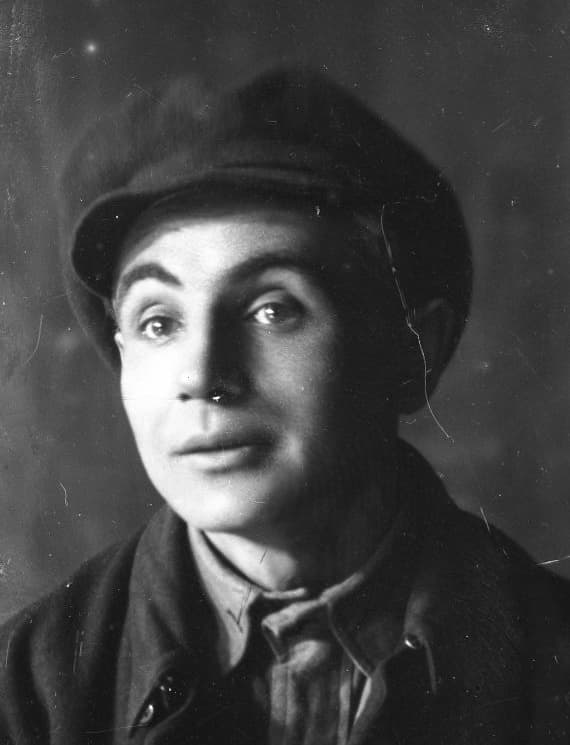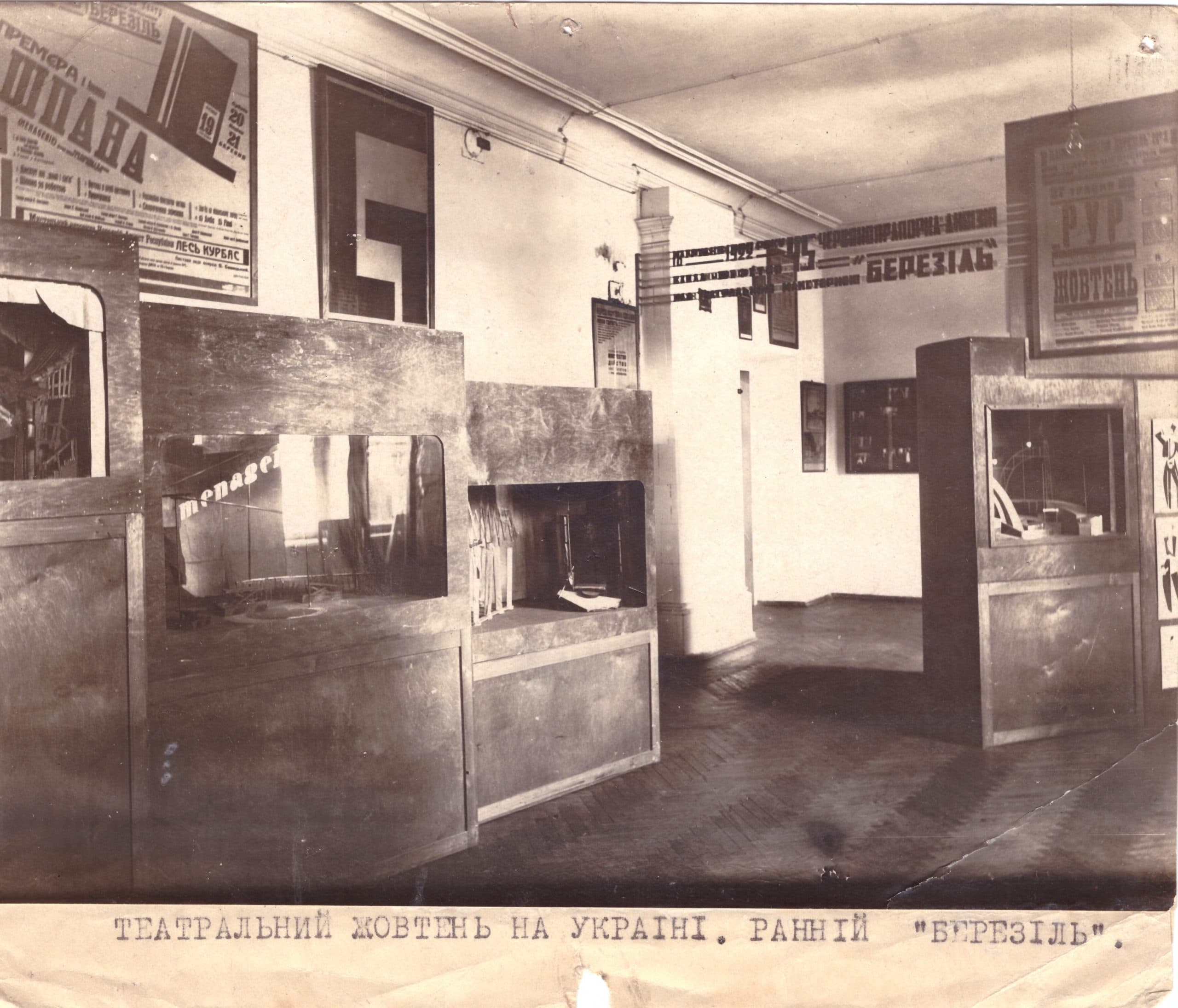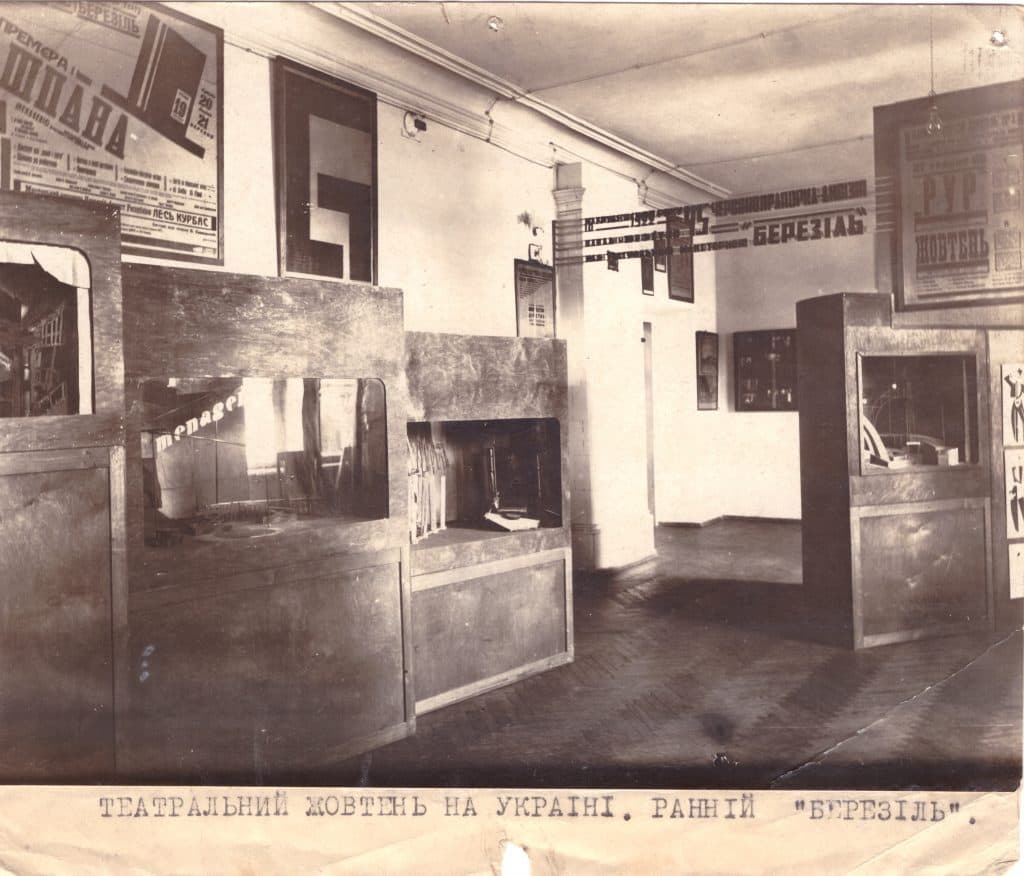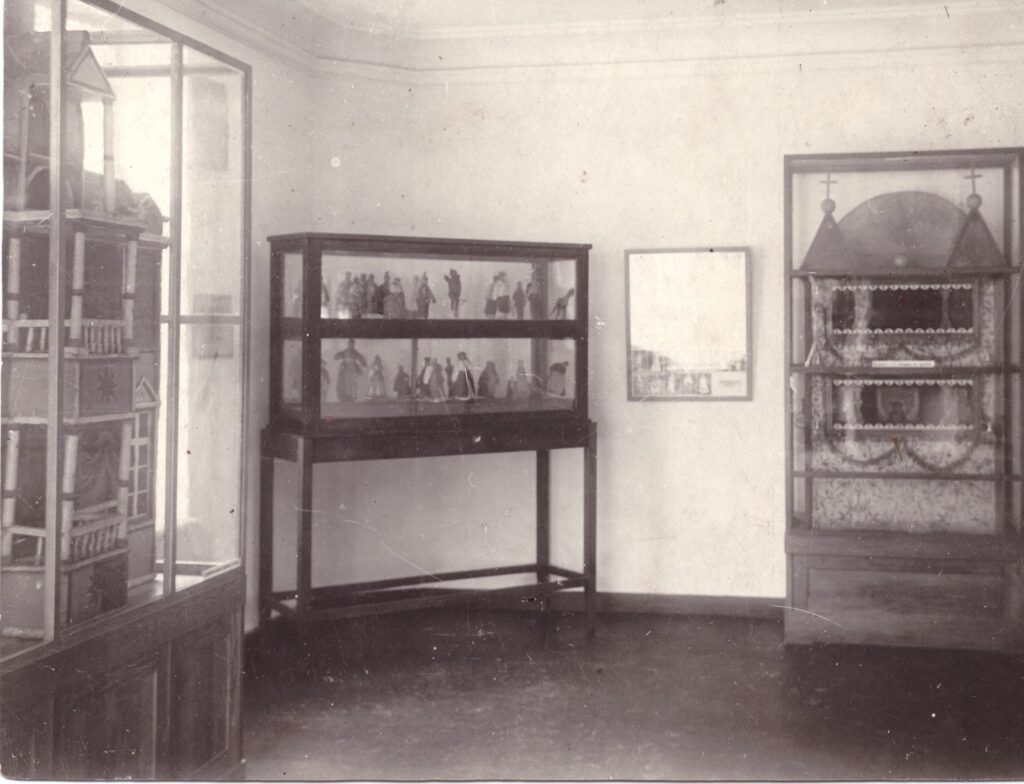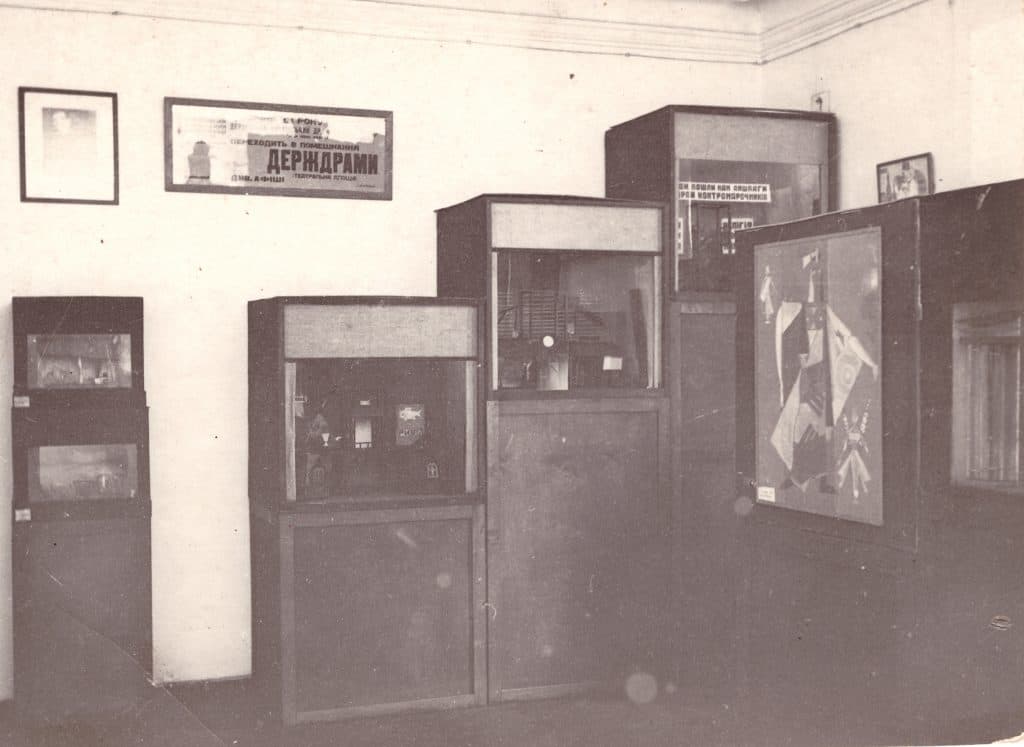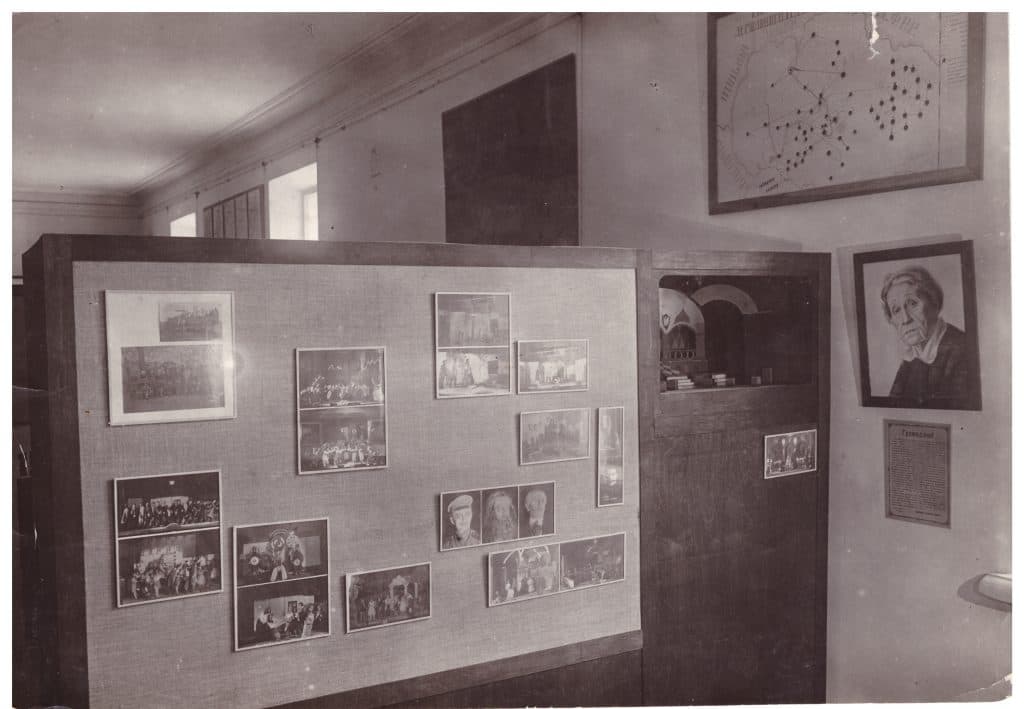In 1926 the Berezil Theater moved to Kharkiv. The Berezil museum collection was given to the history and philology department of the All-Ukrainian Academy of Sciences (AUAS), where it became the basis of the Ukrainian Theater Museum.
That same year, the All-Ukrainian Museum Town was organized on the territory of the Kyiv-Pechersk Lavra, where the cultural, educational and scientific institutions of the AUAS were located. The Ukrainian Theater Museum was given several rooms in the Museum of Scientists and Artists of Ukraine (Building 24).
The collection was first presented to visitors a year after the museum opened – in November 1927. The exhibition, which gave a concrete idea of the development of Ukrainian theater, was an attempt to trace it evolution through a system of museum images. The first exhibition was located in three rooms.
The first presented the four stages of pre-revolutionary Ukrainian theater, which, according to P. Rulin’s terminology, were:
school theater (this included the vertep);
preparatory stage theater;
folk theater;
community and inter-revolutionary theater.
Among the items on display were the nativity scene puppet theaters from Sokyryn and Slavutych. Information about the luminaries of Ukrainian theater was presented in the form of programs, posters and iconographic materials. There wasn’t enough room for costumes. Only the Mykola Sadovskyi Theater was presented separately. Photographs from performances aimed to show the evolution of theater through the deepening of repertoire. The transitional period was represented by the Taras Shevchenko First State Theater and Young Theater. Two halls were dedicated to the present and included sketches by A. Petrytskyi for the unstaged opera Taras Bulba and the opera Prince Ihor, sketches by O. Khvostenko-Khvostov for The Love for Three Oranges, posters, photos and models of different theaters: Ivan Franko Theater, Berezil Theater. The museum exhibition was open to visitors on Saturdays and Sundays. Director P. Rulin himself conducted tours. Later he invited researchers from the theater section of the Academy of Sciences O. Kysil and Z. Liashevych.
The large collection of the Theater Museum allowed to expand the exhibition activities beyond the permanent collection. A number of traveling exhibitions were created: Directions of Ukrainian Theater (1929); Berezil Theater (1929); Puppet Theater in Ukraine (1919, exhibited as part of the European Exhibition in Paris, Riga, Prague); M. Kropyvnytskyi (1932); Theaters of Ukraine in Five Years (1934).
![Exhibition: The Development of Ukrainian Theater, 1927]()
Тест капчи ![Exhibition: The Development of Ukrainian Theater, 1927]()
![Exhibition: The Development of Ukrainian Theater, 1927]()
![Exhibition: The Development of Ukrainian Theater, 1927]()
![Exhibition: The Development of Ukrainian Theater, 1927]()
